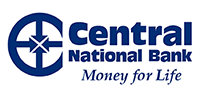
First off, if you haven’t read our blog post about why you should be considering a Home Equity Line of Credit (HELOC), you’ll want to check it out at http://blog.centralnational.com/2017/04/heloc/
If you’re already familiar with how a HELOC works, then maybe you’re trying to figure out what you’d do with it. I don’t know about you, but in my house there’s an ever-evolving list of home improvement projects. There’s constant painting, tiling, flooring, and redecorating.
We’ve also got a looming “deck project” that will someday become a necessity and not just a “wish list” project. We anticipate that our roof may need replacing about the same time and because that’s also a costly project, we may need to consider a HELOC as an avenue for financing. From my perspective, bigger projects are the most obvious reason to open a Home Equity Line of Credit.
Projects involving new siding, doors or roof repairs are an especially intelligent use of HELOC funds because they increase the value of your home. If the exterior protects the interior from the elements your home is much more likely to withhold its resale value than if you let it deteriorate with age.
And the best part? The IRS considers it a good thing if you’re able to utilize a HELOC to substantially increase the value of your home. There are even potential tax benefits available1 to those who use it wisely (link on tax benefits: https://www.irs.gov/newsroom/interest-on-home-equity-loans-often-still-deductible-under-new-law).
Major kitchen or bathroom remodels are also appealing to consumers because a cost-effective upgrade can potentially increase the value of your home. Keep this in mind if you’re living in a home that is 15 years old, or older. Appliance upgrades, especially, can increase your home’s efficiency and safety.
Applying for the line of credit does not mean you have to use it, but it’s an excellent way to have money readily available, almost like a safety net, should you run into a situation with a hot water heater or furnace needing replaced.
If you’re doing your research you’ll note that one of the main reasons financial experts advise against a HELOC is if you don’t have stable income to pay the fees associated with the product. There are generally upfront costs associated with the application for a HELOC. Interest payments are always a factor to consider when applying for credit of any kind. Bottom line is, you should pay attention to the rate, terms and conditions, and also the upfront costs associated with the application.
Luckily for Central National Bank customers, we’re running a “No Origination Fee” promotion starting April 1, 2019 that allows borrowers to start a HELOC without the hassle of paying closing costs. To learn more, visit https://centralnational.com/mortgages/heloc.asp or contact a lender near you to learn about interest rates, or to get your questions answered.
1Please consult your tax advisor regarding potential tax benefits.

